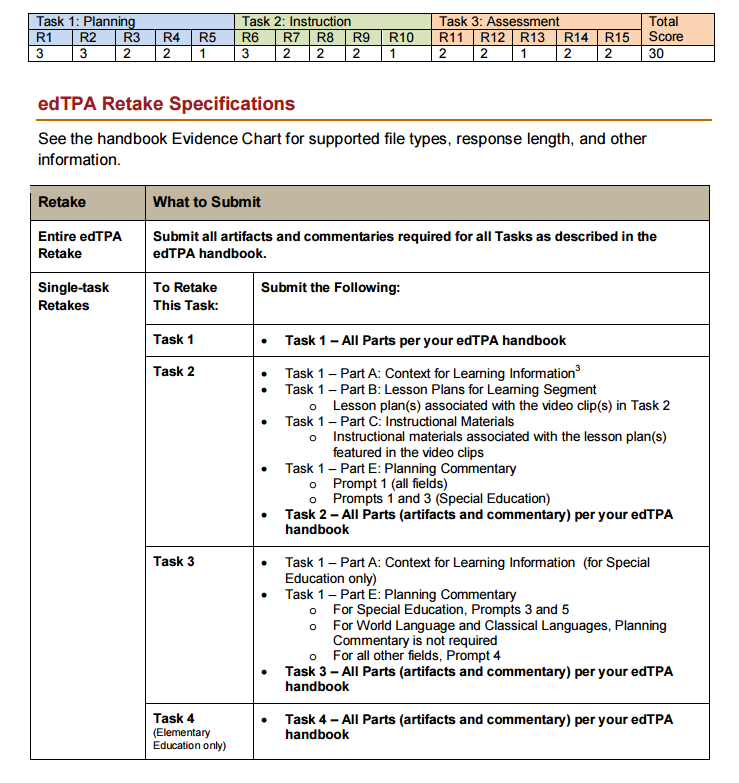Introduction
The assessment of the quality of teaching is a tricky task, as the tool to be designed must incorporate a variety of social and education-related factors. The accuracy of a perfect assessment tool for teaching is, therefore, in direct proportion to its complexity. The tool that has recently been designed for the purposes of evaluating teachers’ skills in colleges, universities and other higher education settings, edTPA (Appendix A) seems to have some basic flaws in its very design, which makes it rather undesirable for introduction into the above-mentioned environment.
Pros and Cons of edTPA
On the one hand, the idea of professionalizing (Guidelines for edTPA® retake decision-making and support, n. d.) education seems innocent; on the other hand, it presupposes that the current educators lack professionalism, which is a subjective point of view, and which can be viewed as an attempt at positioning the present-day educators as amateurish and incompetent.
Moreover, the tool under analysis seems far too sterile to be adopted in the diverse and complex environment of modern colleges and universities. Not having been tested fully yet and being only a concept, the edTPA tool may have some major negative effects on not only the quality of teachers’ assessment but also on the motivation rates among young teachers. Delivering biased and discouraging results, the test is most likely to serve a very controversial goal and have a very dubious effect on the teacher’s performance and the student’s progress.
It would be wrong to deny the edTPA tool certain benefits, though. To the credit of the people designing it, the tool does allow to embrace the multitude of factors that affect the outcomes of the teacher’s strategies and behavior on a number of levels, including social, cultural, economic, etc. Particularly, edTPA helps make sure that the state standards are complied with fully by the teacher and that the students receive the amount of knowledge and information that they are entitled to by the state law: “The edTPA is used to evaluate teaching candidates in five “dimensions of teaching”: planning, instruction, assessment, analysis of teaching and academic language” (Abdul-Alim, 2015, par. 12). Therefore, from a formal perspective, the tool does seem to meet the existing standards and provide a decent basis for teaching, enabling the tutor to adopt the strategies that the teacher views as the most adequate in a specific scenario.
Nevertheless, the existing evidence of several instances of the practical application of edTPA shows that the actual effects of the tool leave much to be desired, mostly in terms of the outcomes concerning the teachers’ enthusiasm and motivation. According to the existing evidence, the tool is often described as stifling in terms of creativity and freedom of choice of teaching tools.
Conclusion
Although some of the claims of the opponents seem to be rather farfetched, the overall criticism of the edTPA tool seems to have a solid basis. Despite the fact that the tool meets the requirements listed by the official standards and regulations, it has very few links with the actual reality of the teaching process. As a result, the specified tool cannot possibly consider the impacts of all the factors involved in an accurate and measurable manner. Even though edTPA cannot be viewed as fully inadequate, it still needs a grand redesign in order to assess the teaching process properly and deliver objective results.
Reference List
Abdul-Alim, J. (2015). New teacher assessment tool making headway in education programs. Web.
Guidelines for edTPA® retake decision-making and support. (n. d.). Web.
Appendix A: edTPA

